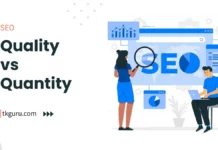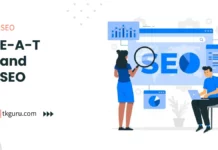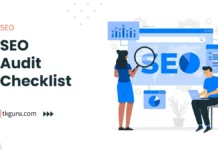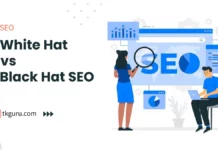Advertisements
Ratings
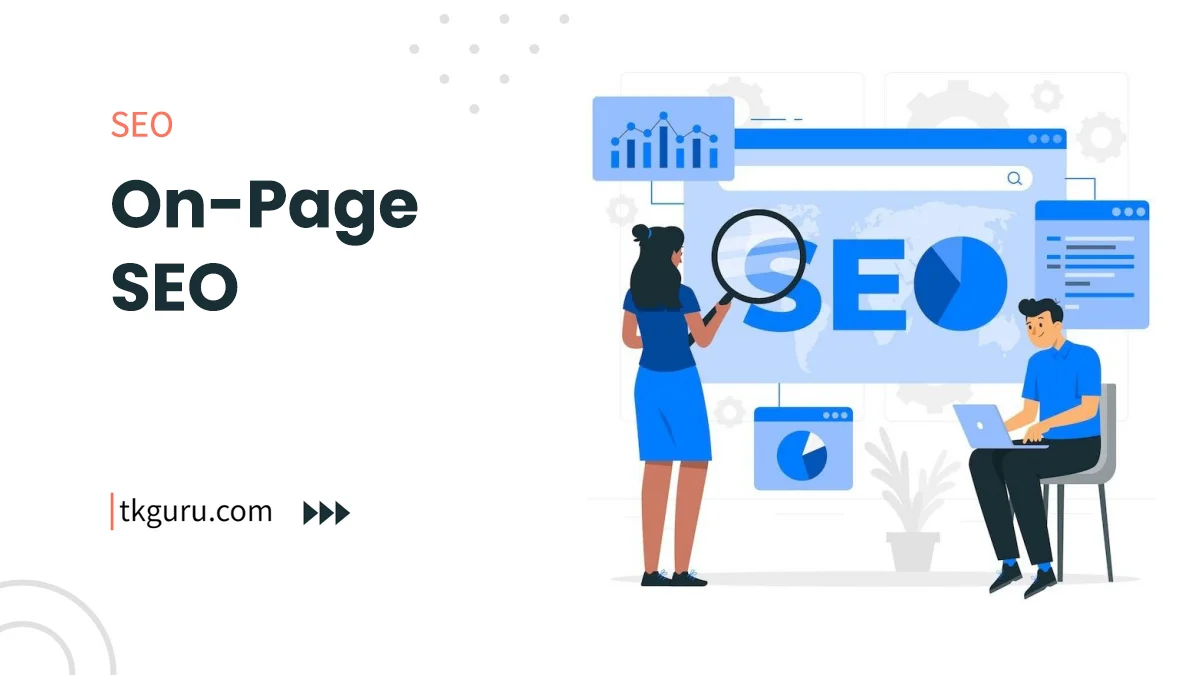
On-Page SEO – In the intricate world of SEO (Search Engine Optimization), on-page techniques stand as the cornerstone of enhancing your website’s visibility and search engine ranking.
These techniques involve optimizing various elements within individual web pages to ensure they align seamlessly with both search engines’ algorithms and users’ preferences.
In this comprehensive guide, we’ll delve into the essential on-page SEO practices that can significantly impact your website’s performance in search results while providing an enhanced user experience.
Contents
1. Keyword Research and Selection
Before diving into the technicalities of on-page optimization, let’s lay the foundation with comprehensive keyword research.
Keywords serve as the bridge between user intent and your content, determining how effectively your web pages connect with your target audience.
1.1 Understanding Keyword Research:
Effective keyword research involves identifying the words and phrases your potential visitors use when searching for information related to your niche.
Tools like Google Keyword Planner, SEMrush, and Ahrefs can be immensely valuable in uncovering relevant keywords with significant search volume.
However, it’s not just about the volume; it’s also about the relevance and intent behind the keywords.
1.2 Embracing Long-Tail Keywords:
While competitive keywords are essential, don’t overlook the power of long-tail keywords.
These longer, more specific phrases often indicate a user’s specific intent and can drive targeted traffic to your pages.
For instance, instead of targeting “running shoes,” consider targeting “best lightweight running shoes for marathon training.”
Table 1: Examples of Long-Tail Keywords:
| Generic Keyword | Long-Tail Keyword |
|---|---|
| Digital camera | Mirrorless digital camera with flip screen |
| Laptop | 15-inch ultrabook laptop with backlit keyboard |
| Recipe | Quick and healthy chicken stir-fry recipe |
2. Crafting Compelling Meta Elements
Meta elements, including meta titles and meta descriptions, play a pivotal role in influencing search engine ranking and enticing users to click on your search result.
2.1 Meta Titles:
Meta titles, also known as title tags, are the first thing users see in search results. Crafting compelling meta titles is crucial for both SEO and user engagement.
Best Practices for Meta Titles:
- Optimal Length: Keep meta titles around 50-60 characters to ensure they’re displayed properly in search results.
- Keyword Placement: Place your primary keyword near the beginning of the title for maximum impact.
- Clarity and Relevance: Ensure the title accurately represents the content of the page and entices users to click.
- Uniqueness: Each page should have a unique meta title that reflects its distinct content.
Table 2: Examples of Well-Optimized Meta Titles:
| Content Type | Original Title | Optimized Meta Title |
|---|---|---|
| Blog Post | “Exploring Paris: A Travel Guide” | “Paris Travel Guide: Explore the City” |
| Product Page | “XYZ Fitness Tracker Review” | “XYZ Fitness Tracker: The Ultimate Review” |
| Service Page | “Web Design Services” | “Professional Web Design Services” |
2.2 Meta Descriptions:
Meta descriptions are brief summaries that provide users with a glimpse of what your page offers.
While they don’t directly impact search engine ranking, they significantly influence whether users choose to click on your link.
Best Practices for Meta Descriptions:
- Engaging Copy: Write concise, engaging descriptions that highlight the value of your content.
- Keyword Inclusion: Incorporate your target keyword naturally to reinforce relevance.
- Call to Action: Encourage users to take action by posing a question or offering a solution.
- Length: Aim for around 150-160 characters to ensure the description isn’t cut off in search results.
Table 3: Examples of Well-Crafted Meta Descriptions:
| Content Type | Original Description | Optimized Meta Description |
|---|---|---|
| Blog Post | “Discover the best Paris attractions” | “Explore iconic Paris attractions and hidden gems in our comprehensive travel guide.” |
| Product Page | “Learn about the features of XYZ Tracker” | “Explore the advanced features and benefits of the XYZ Fitness Tracker in our in-depth review.” |
| Service Page | “Offering top-notch web design services” | “Elevate your online presence with our professional web design services. Contact us for a free consultation.” |
3. Headers and Heading Tags
Headers, often referred to as heading tags (H1, H2, H3, etc.), serve as a roadmap for both users and search engines to navigate through your content.
3.1 H1 Tags:
The H1 tag represents the main heading of a page and carries substantial weight in conveying the core topic to search engines.
Best Practices for H1 Tags:
- Single H1 Tag: Each page should have a single H1 tag that encapsulates the primary topic.
- Keyword Inclusion: Include your primary keyword in the H1 tag if relevant to the content.
- Clear and Descriptive: Craft an H1 tag that succinctly summarizes the page’s purpose.
Table 4: Examples of Well-Optimized H1 Tags:
| Content Type | Original H1 Tag | Optimized H1 Tag |
|---|---|---|
| Blog Post | “Welcome to My Travel Blog” | “Exploring Paris: Your Ultimate Guide” |
| Product Page | “XYZ Fitness Tracker Features” | “Unveiling the Features of XYZ Fitness Tracker” |
| Service Page | “Our Web Design Services” | “Professional Web Design Solutions for Your Business” |
3.2 Subheadings (H2, H3, etc.):
Subheadings break down content into sections, making it easier for users to scan and understand the information.
Best Practices for Subheadings:
- Hierarchy: Use H2 for main sections and H3 for subsections to create a clear content hierarchy.
- Relevance: Incorporate relevant keywords naturally in subheadings where applicable.
- Readability: Keep subheadings concise and descriptive to guide readers through the content.
Table 5: Examples of Effective Subheadings:
| Content Type | Subheadings in Content |
|---|---|
| Blog Post | “Top Attractions in Paris” |
| “Hidden Gems Off the Beaten Path” | |
| “Navigating Parisian Cuisine: A Culinary Journey” | |
| Product Page | “Key Features of the XYZ Fitness Tracker” |
| “Why Choose the XYZ Tracker for Your Fitness Goals” | |
| Service Page | “Our Approach to Web Design” |
| “Custom Solutions Tailored to Your Brand” | |
| “Client Success Stories: Our Portfolio” |
4. URL Structure and Permalinks
The URL structure is not only essential for search engines but also contributes to the overall user experience. A well-structured URL provides users with a clear indication of what to expect on the page.
4.1 Best Practices for URL Structure:
- Descriptive URLs: Craft URLs that accurately reflect the content of the page.
- Hyphens: Use hyphens (-) to separate words in URLs for better readability.
- Avoid Parameters: Minimize the use of unnecessary parameters or symbols in URLs.
Table 6: Examples of Descriptive and Optimized URLs:
| Content Type | Original URL | Optimized URL |
|---|---|---|
| Blog Post | “yoursite.com/post123” | “yoursite.com/exploring-paris-travel-guide” |
| Product Page | “yoursite.com/product?id=456” | “yoursite.com/xyz-fitness-tracker-features” |
| Service Page | “yoursite.com/services/12” | “yoursite.com/web-design-services” |
5. Content Optimization
Optimizing the content itself is a fundamental on-page SEO technique. Effective content optimization ensures that your content resonates with both users and search engines.
5.1 Keyword Placement:
Strategically placing keywords within your content signals to search engines the relevance of your content to user queries.
Best Practices for Keyword Placement:
- Natural Integration: Incorporate keywords naturally into your content without overstuffing.
- Opening Paragraph: Include the primary keyword in the opening paragraph to establish relevance.
- Subheadings: Use keywords in subheadings where appropriate to guide both users and search engines.
Table 7: Example of Keyword Placement in Content:
| Content Type | Example Sentence |
|---|---|
| Blog Post | “Explore the top attractions in Paris, known for their historical significance and stunning architecture.” |
| Product Page | “Discover the features that make the XYZ Fitness Tracker a must-have accessory for your fitness journey.” |
| Service Page | “Our web design services combine creativity and functionality, ensuring a seamless online presence for your brand.” |
5.2 High-Quality Content:
Beyond keywords, the quality of your content plays a pivotal role in retaining users and satisfying search engines.
Best Practices for High-Quality Content:
- In-Depth Information: Provide comprehensive information that addresses user needs.
- Uniqueness: Avoid duplicating content from other sources; strive for originality.
- Engagement: Craft content that encourages user engagement through value and readability.
Table 8: Examples of Engaging and Valuable Content:
| Content Type | Example Content Snippet |
|---|---|
| Blog Post | “When exploring Paris, don’t miss the iconic Eiffel Tower, a symbol of romance and architectural marvel.” |
| Product Page | “The XYZ Fitness Tracker boasts advanced features, including heart rate monitoring and GPS tracking, to elevate your workouts.” |
| Service Page | “Our web design services blend creativity and functionality, resulting in visually appealing websites that deliver seamless user experiences.” |
6. Internal Linking
Internal linking involves connecting different pages within your website, enhancing navigation and spreading link equity.
6.1 Best Practices for Internal Linking:
- Relevance: Link to related pages that provide additional context to users.
- Anchor Text: Use descriptive anchor text that accurately reflects the linked page’s content.
- Hierarchy: Incorporate internal links within your content hierarchy for optimal flow.
Table 9: Examples of Relevant Internal Linking:
| Content Type | Example of Internal Linking |
|---|---|
| Blog Post | “Learn about Parisian history through our detailed article on the History of Paris.” |
| Product Page | “For more information on fitness accessories, check out our Fitness Gear Collection.” |
| Service Page | “Explore our Portfolio to see examples of our web design projects and client successes.” |
7. Image Optimization
Images contribute not only to user engagement but also to SEO when optimized correctly.
7.1 Image Alt Text:
Image alt text provides context to search engines and ensures accessibility for users.
Best Practices for Image Alt Text:
- Descriptive: Describe the image’s content using clear and concise language.
- Keywords: Include relevant keywords where appropriate, but avoid keyword stuffing.
- Functional: Alt text should convey the image’s purpose, even if it doesn’t display.
Table 10: Examples of Well-Optimized Image Alt Text:
| Content Type | Original Alt Text | Optimized Alt Text |
|---|---|---|
| Blog Post | “Eiffel Tower at sunset” | “Eiffel Tower silhouette against a colorful sunset sky” |
| Product Page | “XYZ Fitness Tracker” | “XYZ Fitness Tracker displaying heart rate data during a workout” |
| Service Page | “Web Design Services” | “Responsive web design services for a variety of industries” |
7.2 Image Compression and Loading Speed:
Optimizing images for faster loading speeds improves user experience and SEO.
Best Practices for Image Optimization:
- File Size: Compress images to reduce file size while maintaining quality.
- Formats: Use efficient formats like JPEG for photographs and PNG for images with transparency.
- Responsive: Ensure images are responsive and adjust to different screen sizes.
Table 11: Examples of Image Optimization Techniques:
| Content Type | Original Image Size | Optimized Image Size |
|---|---|---|
| Blog Post | 1.2 MB | 450 KB |
| Product Page | 800 KB | 300 KB |
| Service Page | 1.5 MB | 600 KB |
8. Schema Markup and Structured Data
Schema markup and structured data provide additional context to search engines, enhancing the display of search results.
8.1 Best Practices for Schema Markup:
- Relevance: Implement schema markup that aligns with the content and purpose of the page.
- Rich Snippets: Leverage schema to display rich snippets, such as star ratings and product information.
- Tools: Utilize tools like Google’s Structured Data Markup Helper to implement schema effectively.
Table 12: Examples of Schema Markup for Different Content:
| Content Type | Schema Markup Type |
|---|---|
| Blog Post | Article schema |
| Product Page | Product schema |
| Service Page | Service schema |
9. Mobile Responsiveness
In an era dominated by mobile devices, ensuring your website is mobile-responsive is paramount.
9.1 Best Practices for Mobile Responsiveness:
- Responsive Design: Implement responsive web design that adapts to different screen sizes.
- User Experience: Prioritize ease of navigation, readability, and interactive elements.
- Mobile-First Indexing: Design with mobile users in mind, as Google’s algorithms prioritize mobile-friendly content.
Table 13: Examples of Mobile-Responsive Design:
| Content Type | Mobile-Responsive Design Features |
|---|---|
| Blog Post | Easy-to-read fonts, collapsible menu, swipeable image galleries |
| Product Page | Touch-friendly buttons, clear product images, simplified checkout process |
| Service Page | Clear call-to-action buttons, simplified forms for inquiries |
Conclusion
Incorporating effective on-page SEO techniques is an investment that yields substantial returns in search engine visibility and user engagement.
By diligently implementing keyword research, crafting compelling meta elements, optimizing headers and content, and embracing image and URL optimization, you can position your web pages for higher search engine rankings and improved user experiences.
As you navigate the dynamic landscape of on-page SEO, remember that these best practices evolve alongside search engine algorithms and user preferences.
Continuously monitoring your website’s performance and adapting your strategies accordingly will ensure that your on-page optimization efforts remain effective and aligned with the ever-changing digital realm.
On-Page SEO FAQs
What is On-Page SEO?
On-Page SEO refers to the practice of optimizing individual web pages to improve their visibility in search engine results and attract relevant organic traffic.
It involves optimizing various elements on a webpage, such as content, HTML code, meta tags, images, and internal links, to ensure they are aligned with search engine algorithms and user intent.
What are some key On-Page SEO factors?
Key On-Page SEO factors include:
- Keyword Optimization: Incorporating relevant keywords naturally into the content, headings, and meta tags.
- High-Quality Content: Providing valuable and relevant content that satisfies user search intent.
- Meta Tags: Optimizing meta titles and descriptions to accurately describe the content and attract clicks.
- Header Tags: Using proper hierarchy (H1, H2, H3) for headings to structure content and highlight important information.
- URL Structure: Creating descriptive and readable URLs that include relevant keywords.
How important is content in On-Page SEO?
Content is a cornerstone of On-Page SEO. High-quality, well-researched, and relevant content not only helps satisfy user intent but also encourages longer page visits, lower bounce rates, and higher engagement.
Search engines prioritize content that provides value to users and answers their queries effectively.
How does page speed impact On-Page SEO?
Page speed plays a crucial role in On-Page SEO. Slow-loading pages can lead to higher bounce rates and decreased user satisfaction.
Search engines, such as Google, consider page speed as a ranking factor. Optimizing images, reducing server response times, using browser caching, and minimizing code can all contribute to faster page loading times.
Why is mobile-friendliness important for On-Page SEO?
Mobile-friendliness is vital for On-Page SEO due to the increasing use of mobile devices for internet browsing.
Search engines prioritize mobile-friendly websites to provide better user experiences. Websites that are responsive and adapt well to different screen sizes not only improve user engagement but are also more likely to rank higher in mobile search results.
| Web Hosting | Website |
| WordPress | Google Adsense |
| SEO | Affiliate Marketing |
| Blogging | YouTube |
Recent Posts
- Top 6 SEO Companies in Ahmedabad 2024: Unlock Success with the Top SEO Companies in Ahmedabad
- Top 5 SEO Companies in Kanpur 2024: Discover the Top-Rated SEO Companies in Kanpur
- Quality vs Quantity: The Importance of High-Quality Backlinks
- E-A-T and SEO: Expertise, Authoritativeness, Trustworthiness
Related Tags
off-page seo techniques, on-page optimization techniques, on-page seo checklist, on-page optimization examples, on-page optimization techniques in digital marketing, on-page seo activities list, why on-page seo is important, on-page seo checklist template



